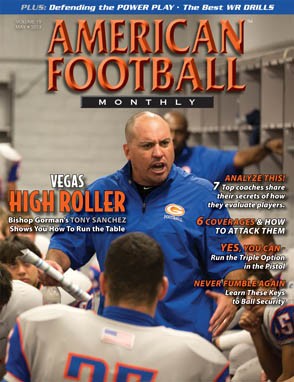Article CategoriesAFM Magazine
|
Understanding Coverages and How to Attack Themby: Gene Suhr© More from this issue Each defensive coverage has strengths and weaknesses and ways to attack it. You can help your quarterbacks get through problem areas by teaching them how to identify coverages. Whether it is the pre-snap read, reading on the move, or route adjustments, the quarterback’s performance is based upon his knowledge of how to identify and react to coverages. When teaching the quarterback to identify coverages, we start with the pre-snap read, which will identify the secondary’s alignment. This will start his thought process prior to the snap. The purpose is to identify {1} the depth of the corners, {2} number of safeties, {3} weak side flat defender and {4} the number in the box. We teach our QBs to find the FS “Waldo” and from there they should be able to identify the coverage. If we are using our thre....The full article can only be seen by subscribers.
|
|
|||||||
| HOME |
MAGAZINE |
SUBSCRIBE | ONLINE COLUMNISTS | COACHING VIDEOS |
Copyright 2026, AmericanFootballMonthly.com
All Rights Reserved





